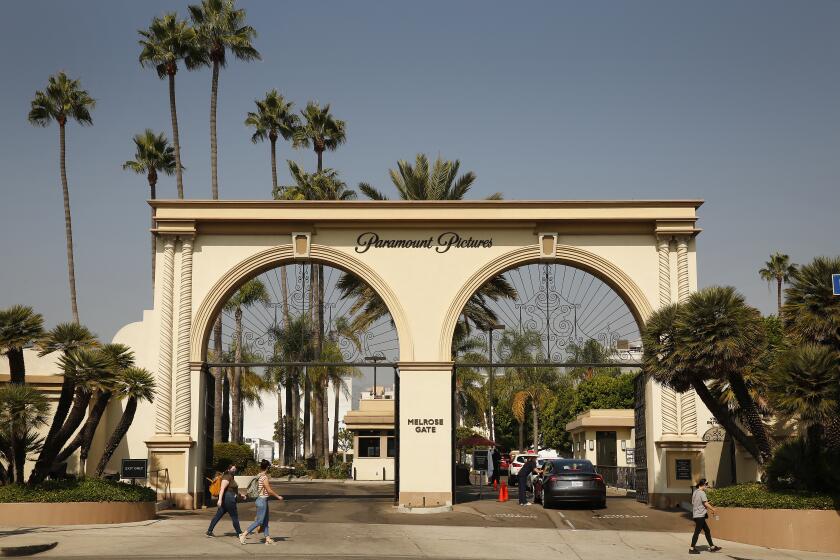Banks Post Big Profits in Quarter : Finance: Regulators credit the record earnings to declining interest rates. However, California institutions are hurt by the real estate market.
- Share via
WASHINGTON — Low interest rates helped boost the banking industry’s profits to a record $7.6 billion during the first quarter, but troubled real estate loans still cast a pall over the financial prospects for many individual institutions, the Federal Deposit Insurance Corp. reported Wednesday.
“The industry is clearly in better shape than it was a year ago,” FDIC Chairman William Taylor told the Senate Banking Committee.
The record earnings compared to profits of $5.5 billion during the same period a year ago and topped the previous high of $7.3 billion set in the first quarter of 1989.
California banks, however, did not follow the national trend. As a group, profits declined because of continuing trouble in commercial real estate, according to the FDIC.
Nationally, bank earnings boomed because there is an unusually large spread, 4.31%, between the low interest rates paid to savers and the significantly higher rates charged for loans. While low rates are a boon for banks, they have been drawing complaints from many Americans who depend on interest income, particularly retired people who live on savings and investments.
Taylor warned that the financial relief enjoyed by banks because of low interest rates is only a temporary distraction from the industry’s serious problems.
“Low interest rates will save the lives of some institutions and it will extend others, but it will not save all of them,” the FDIC chairman said. The extraordinary first-quarter profits were also helped by gains of $682 million from the sale of securities held by the banks.
Despite their record profits, the banks are doing less of their basic business--making loans. Total lending fell by $16.6 billion during the first three months of the year.
Consumer loans, notably credit card debt, declined, along with lending to businesses. It marked the fifth straight quarter in which overall lending activity weakened.
However, there were slight increases in loans for residential and commercial real estate.
Profits at California banks fell to $271 million, down from $750 million a year earlier, the FDIC reported.
The sharp decline was caused by “depressed results at the five largest California banks,” according to the quarterly banking report issued by the agency, which insures deposits up to $100,000.
The state’s biggest banks have also substantially increased their reserves to cover future losses as they write down the value of troubled real estate loans.
California escaped for a long time the problems plaguing real estate in other markets: a big oversupply of office buildings and shopping centers. But the real estate recession is now hitting California hard, according to the financial regulators.
The banking industry, which has real estate lending as its biggest single source of business, will be financially vulnerable until the real estate markets return to normal conditions, acting Comptroller of the Currency Stephen Steinbrink told the committee. The national vacancy rate for commercial office space is 19%, compared to 5% in 1981.
It may take five years or more in some markets for demand to catch up with the supply of office space, Steinbrink noted.
“As a result, we expect bank profitability to remain below historical levels for some time to come,” he said. “Bank failures remain at relatively high levels, and we expect those failure levels to continue.”
While reducing lending, banks increased their purchases of Treasury securities.
“They are moving away from their primary purpose (making loans),” said Sen. Alphonse M. D’Amato (R-N.Y). “I’m fed up with it.” He accused the banks of refusing to give credit to small and mid-sized businesses with good financial ratings.
Federal Reserve Board Gov. John P. LaWare defended the banks, saying many of the complaints about tight credit came from borrowers “who didn’t pay their loans last year.” Banks “will tell you there isn’t any significant demand out there” from healthy borrowers, LaWare said.
D’Amato fired back: “That’s nonsense. If you tell me that (answer), that’s why more people are looking at Ross Perot.”
All three financial regulators once again endorsed proposals for expanded bank powers, including the ability to move across state lines and to expand into the securities and insurance businesses. These ideas were pushed hard last year by the Bush Administration, but ultimately rejected by Congress.
Bank Profits at a High
Although commercial banks recorded a record high of $7.6 billion in profits for the first quarter of this year, many institutions are still troubled by bad real estate loans.
Quarterly profits (in billions of dollars)
1989, 3rd quarter: $-0.6
1992, 1st quarter: $7.6
Source: Federal Deposit Insurance Corp.
More to Read
Inside the business of entertainment
The Wide Shot brings you news, analysis and insights on everything from streaming wars to production — and what it all means for the future.
You may occasionally receive promotional content from the Los Angeles Times.










